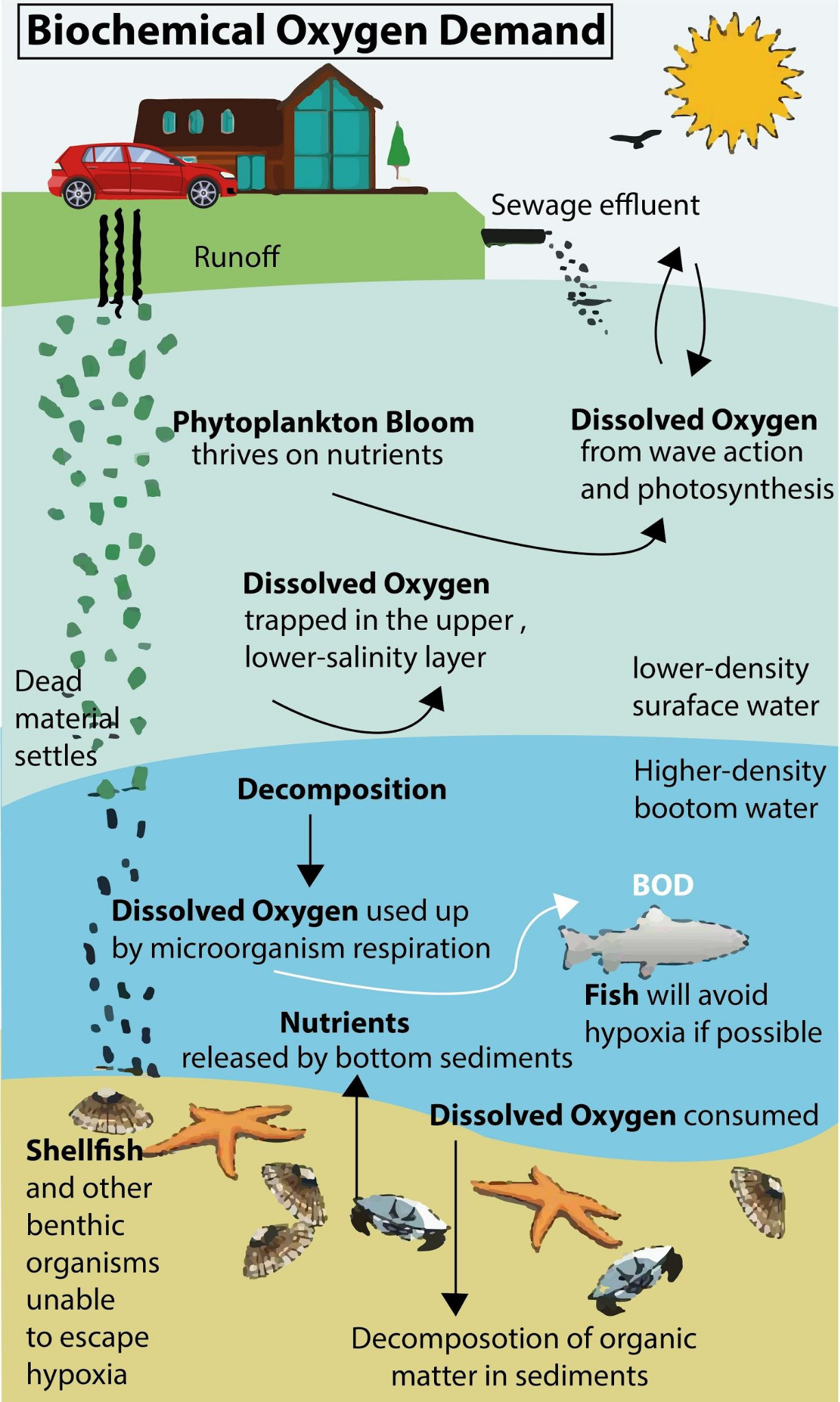




Learn about What is BOD?
BOD, or Biological Oxygen Demand, is a crucial environmental parameter that measures the amount of oxygen consumed by microorganisms while decomposing organic matter in water.
Find here the provides insights into the importance, measurement, and implications of BOD in water quality assessment.
What is Biological Oxygen Demand (BOD)?
Biological Oxygen Demand (BOD) is the amount of dissolved oxygen needed by microorganisms to break down organic matter in water.
Key Facts:
Measures Organic Pollution: Indicates the level of organic waste in water bodies.
Higher BOD = Poor Water Quality: Excessive organic matter can deplete oxygen, endangering aquatic organisms.
Used in Wastewater Treatment: Helps monitor the efficiency of water treatment processes.
Why is BOD Important in Water Quality Assessment?
BOD is a vital parameter in assessing water quality and determining pollution levels in rivers, lakes, and wastewater.

Indicates Water Pollution Levels: High BOD means higher organic waste and poor water quality.
Essential for Aquatic Life: Low oxygen levels can cause fish kills and disrupt ecosystems.
Used in Environmental Regulations: Helps in setting wastewater discharge standards.
Monitors Wastewater Treatment Efficiency: Ensures treated water is safe before being released into natural water bodies.
How is BOD Measured?
BOD is measured in a laboratory under controlled conditions over a set period.
Water Sample Collection: A sample of water is taken for analysis.
Initial Dissolved Oxygen (DO) Measurement: The initial oxygen level is recorded.
Incubation: The sample is stored at 20°C for 5 days in the dark.
Final DO Measurement: The remaining oxygen level is recorded.
BOD Calculation: The difference between initial and final DO values gives the BOD level.
BOD Levels and Water Quality Indicators
BOD levels vary based on water pollution levels. Here’s how they indicate water quality:
1-2 mg/L: Clean water with minimal pollution.
3-5 mg/L: Moderately polluted water.
6-9 mg/L: Poor water quality, requires treatment.
10+ mg/L: Highly polluted water, unsafe for aquatic life.
Factors Influencing BOD Levels
Several factors influence the BOD level in a water body.
Presence of Organic Waste: More waste leads to higher BOD.
Microbial Activity: More bacteria mean higher oxygen consumption.
Water Temperature: Warmer water speeds up decomposition, increasing BOD.
Flow Rate of Water: Stagnant water retains more organic matter, raising BOD levels.
Effective Ways to Reduce High BOD Levels
Reducing BOD is essential for improving water quality and maintaining ecological balance.
Proper sewage and industrial wastewater treatment lowers BOD.
Controlling the release of organic matter into water bodies.
Adding oxygen to water helps break down organic matter efficiently.
Wetland plants help absorb excess nutrients, reducing BOD naturally.
Conclusion
Biological Oxygen Demand (BOD) is a critical parameter in assessing and managing water pollution. High BOD levels indicate poor water quality, which can harm aquatic ecosystems. Proper wastewater treatment and pollution control measures are necessary to keep BOD levels in check and ensure a sustainable environment.
FAQs on BOD Full Form -Biological Oxygen Demand
1. What is the full form of BOD?
BOD stands for Biological Oxygen Demand.
2. Why is BOD important in water quality assessment?
BOD helps measure water pollution levels and the effectiveness of wastewater treatment.
3. How is BOD measured?
BOD is measured by comparing oxygen levels in a water sample before and after incubation for five days.
4. What does a high BOD level indicate?
A high BOD level indicates excessive organic pollution and poor water quality.
5. What is the acceptable BOD level for drinking water?
Drinking water should have a BOD level close to 1 mg/L for safety.
6. Can high BOD levels harm aquatic life?
Yes, high BOD levels reduce oxygen in water, threatening fish and other aquatic organisms.
7. How can industries reduce BOD in wastewater?
Industries can reduce BOD by treating wastewater before disposal and reducing organic waste discharge.
8. What role does aeration play in reducing BOD?
Aeration increases oxygen levels, helping break down organic matter more efficiently.
9. What are the main sources of high BOD in water bodies?
Common sources include sewage, industrial effluents, agricultural runoff, and organic waste discharge.
10. Can BOD levels be controlled naturally?
Yes, wetlands and vegetation help absorb nutrients and improve water quality naturally.























